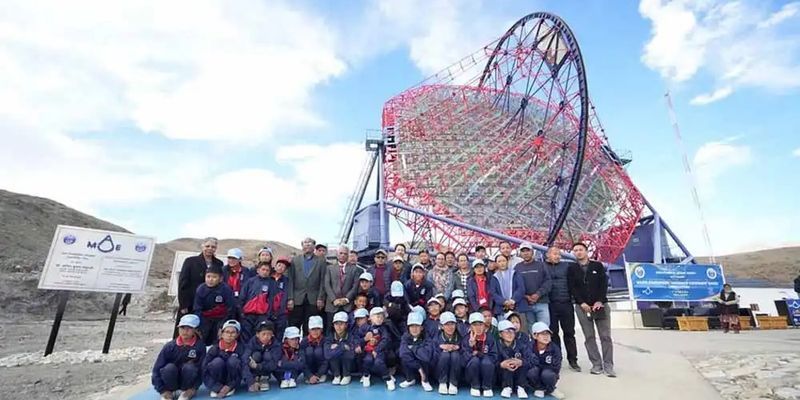India is again taking a giant leap in space science, and this time, it’s by reaching for the stars. Nestled at a breathtaking altitude of over 4,300 meters in Ladakh’s Hanle region, India has inaugurated the world’s highest imaging gamma-ray telescope, known as the Major Atmospheric Cherenkov Experiment (MACE). Built indigenously by the Bhabha Atomic Research Centre (BARC), with critical support from Indian industry partners, this colossal telescope is also the largest imaging Cherenkov telescope in Asia.
Why Is This Such a Big Deal?
Gamma rays are some of the universe’s most energetic phenomena, but capturing them isn’t a walk in the park—more like a spacewalk! With its altitude, the MACE telescope enjoys the clear skies of the Hanle Dark Sky Reserve (HDSR), minimising atmospheric interference. This strategic location allows for precision gamma-ray observations that will contribute to studying cosmic wonders like supernovae, black holes, and gamma-ray bursts—the real “fireworks” of the universe.
The MACE Observatory is no small feat either. Standing 43 meters tall and weighing in at around 170 tonnes, it houses a 21-meter diameter mirror system fitted with over 1,000 photomultiplier tubes. This setup allows it to detect minute flashes of Cherenkov light produced when high-energy gamma rays collide with Earth’s atmosphere. In simpler terms, it’s like catching cosmic sparks to better understand our universe’s wildest events.
A Win for India’s Space Aspirations
This telescope not only positions India as a key player in global cosmic-ray research but also encourages a collaborative spirit. As Dr. Ajit Kumar Mohanty, Secretary of the Department of Atomic Energy, emphasised, MACE will foster international partnerships and solidify India’s role in multi-messenger astronomy—where astronomers use multiple signals (like gamma rays and gravitational waves) to unlock the universe’s deepest secrets.
Benefits Beyond Science
But this isn’t just a story of space science. MACE is set to play a significant role in Ladakh’s socio-economic development. The observatory aims to inspire local communities, especially students, to delve into the fields of astrophysics and astronomy. This project showcases the intersection of cutting-edge technology and community engagement, creating opportunities for Ladakh’s future scientists.










